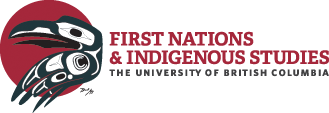Aboriginal Identity & Terminology
…a particular family, clan, band, or nation and may prefer to use the traditional terms and names that locate them within those circumstances. When introducing themselves, people may identify themselves…
Reserves
…under the pretense that Aboriginal people did not need so much land and that white settlers would make better use of it—an ethnocentric view that defined “productive use” as resource…
Terminology
…So, which terms do I use? Terminology, particularly as it relates to Indigenous peoples, can be tricky to navigate. A term that might be acceptable to some might be…
Aboriginal Fisheries in British Columbia
…the Aboriginal food fishery large mesh drift nets had been approved for use in limited weekend openings. Stó:lō Tribal Council spokesman Ernie Crey voiced the serious concerns of the Stó:lō…
Cedar
…types of cedar are harvested by coastal First Nations to create a variety of implements for daily use and ceremonial purposes.8 Almost every part of a cedar tree can be…
Aboriginal Rights
…What are Aboriginal rights? Aboriginal rights are collective rights which flow from Aboriginal peoples’ continued use and occupation of certain areas. They are inherent rights which Aboriginal peoples have…
Bands
…as a “body of Indians,” a) “for whose use and benefit in common, lands, the legal title to which is vested in Her Majesty, have been set apart” b) has…
Royal Proclamation, 1763
…to be Our Royal Will and Pleasure, for the present as aforesaid, to reserve under our Sovereignty, Protection, and Dominion, for the use of the said Indians, all the Lands…
Gustafsen Lake
…they were prepared to die if necessary to protect the land. The Sundancers were concerned about the need to continue to use the site for their religious and spiritual purposes…
Oral Traditions
…Stories? The use of oral histories as evidence in the court of law has become a topic of much discussion and debate in Canada. Perhaps the most famous example of…

